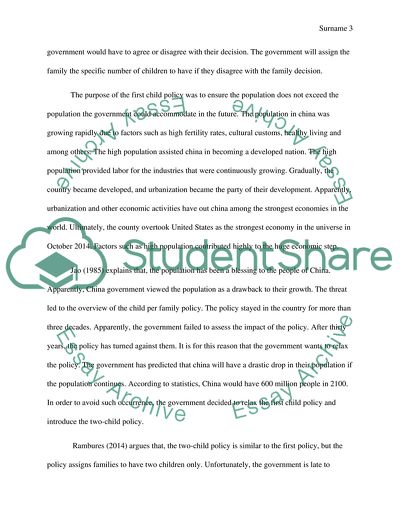Cite this document
(Too Late for China to Relax First Child Policy Literature review Example | Topics and Well Written Essays - 2750 words, n.d.)
Too Late for China to Relax First Child Policy Literature review Example | Topics and Well Written Essays - 2750 words. https://studentshare.org/sociology/1874165-is-the-change-of-chinas-one-child-policy-too-latewhy
Too Late for China to Relax First Child Policy Literature review Example | Topics and Well Written Essays - 2750 words. https://studentshare.org/sociology/1874165-is-the-change-of-chinas-one-child-policy-too-latewhy
(Too Late for China to Relax First Child Policy Literature Review Example | Topics and Well Written Essays - 2750 Words)
Too Late for China to Relax First Child Policy Literature Review Example | Topics and Well Written Essays - 2750 Words. https://studentshare.org/sociology/1874165-is-the-change-of-chinas-one-child-policy-too-latewhy.
Too Late for China to Relax First Child Policy Literature Review Example | Topics and Well Written Essays - 2750 Words. https://studentshare.org/sociology/1874165-is-the-change-of-chinas-one-child-policy-too-latewhy.
“Too Late for China to Relax First Child Policy Literature Review Example | Topics and Well Written Essays - 2750 Words”. https://studentshare.org/sociology/1874165-is-the-change-of-chinas-one-child-policy-too-latewhy.


